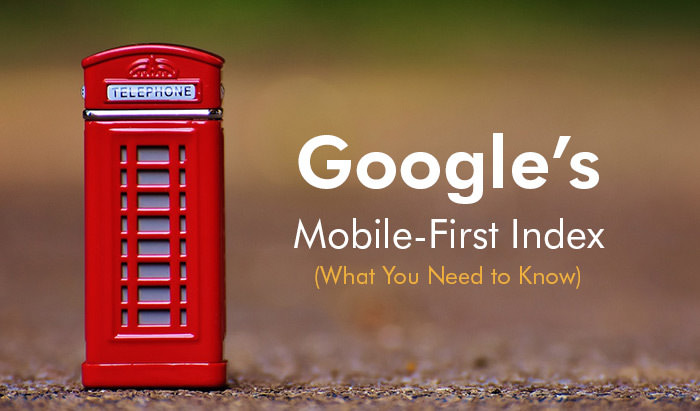Google’s Mobile-First Index: What You Need to Know

In November, the switch was said to be only “months away,” but Google still hasn’t implemented the change. So what’s the hang up?
The Quality Problem
In short, the answer is quality. Google doesn’t want the caliber of its search results to change because it is evaluating mobile sites and content first. In the case of a business with a separate mobile website, copy and pages may differ from the desktop version. In an effort to streamline the mobile experience, owners of separate mobile sites may cut pages that they deem “extra,” meaning all of the content available on the site is not presented to users on mobile devices. This also means that ranking signals like links may be lost. And that’s Google’s dilemma. How do they evaluate mobile content first and ensure that they provide accurate results if the signals they need are missing?
Google is still testing out new ranking signals to make up for those that they might miss. However, it’s not unlike Google to do a secret, experimental rollout. In fact, last Friday, they announced that the mobile-first index “may be released in slow batches.” For webmasters, this announcement means it might be time to get ahead of the game.
Preparing for the Mobile-First Index
As Google works out the kinks in the new index, you can take some extra steps to make sure you’re ready for the switch. Here are some quick tips to get you started (keep in mind that these are for separate mobile sites with different versions of content and/or fewer pages).
- As always, produce quality content that you want to rank for.
- Include structured data on your mobile site.
- Be sure to add rel=alternate and rel=canonical tags to signal the relationship between your desktop and mobile sites.
- Don’t forget to verify the mobile version of you site in Search Console. Search Console will view your mobile and desktop sites as two separate websites, so you need to have both verified there.
Wait, What About Responsive Sites?
Now, if you have a responsive website, you’re probably wondering what this change means for you. Here’s another benefit of going responsive: you don’t need to change a thing for the mobile-first index. Because a responsive site serves the exact same content to users across devices, they all have identical experiences. And Google bots can see all of the important ranking signals for your site. Hooray!
Time to Get Ready
While the final rollout date is still unknown, it’s best to be prepared for the change now, especially if you have a separate mobile site. Make sure your desktop and mobile sites contain content you want to rank for and remember, Google ranks quality content over minimal content.
